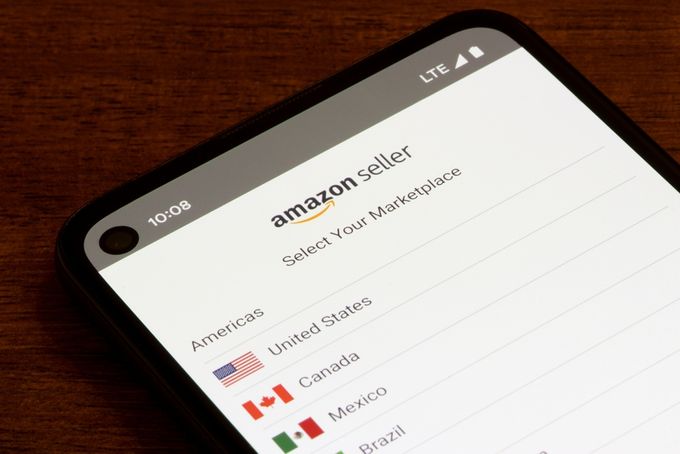Amazon FBM vs. FBA: Which Is Better for Your E-Commerce Business?
Published July 31, 2022

No matter what type of e-commerce business you run, there’s potentially no better way to reach an endless amount of potential customers than with Amazon. Amazon is the most visited e-commerce website in the world, and it's no secret that shoppers prefer to buy items there. In fact, nearly half of all online shoppers start their product searches on the platform.
But should you be using Amazon FBM or FBA for your business? Read on to find the answer.
How Fulfillment by Merchant Works
When customers order items from Amazon.com, they have the option to choose "Fulfillment by Merchant" (FBM) as their shipping method. FBM orders are fulfilled by the seller of the product, rather than Amazon. This option is available for products that are sold by third-party merchants on Amazon.
The biggest benefit of choosing FBM is that the seller is able to control the entire fulfillment process, from packing and shipping, to the method of calculating shipping costs, to customer service. Sellers also have the ability to customize their shipping and handling options and can choose to include a note or gift message with each order.
Since sellers are responsible for fulfilling FBM orders, they must maintain an inventory of products and be prepared to ship orders within one business day. Sellers also need to be familiar with Amazon's policies and procedures for fulfilling orders, including shipping requirements and restrictions.
How Fulfillment by Amazon Works
If you are an Amazon merchant, you have the option to use "Fulfillment by Amazon" (FBA), which allows you to store your products in Amazon's fulfillment centers and let them handle shipping. Here is how FBA works:
- Either you or your suppliers send products to an Amazon fulfillment center.
- When a customer orders one of your products, Amazon ships it from the fulfillment center closest to the customer.
Costs of Selling With Amazon FBA vs. FBM
FBA
The cost of selling through Amazon's FBA (Fulfillment by Amazon) service can be expensive for small businesses. For example, businesses are charged a monthly fee for storage space—$0.75 per cubic foot and up to $2.40 per cubic foot through the holiday months—and they are also charged a fee for each item that is shipped through the FBA program. In addition, businesses must pay Amazon's commission on each sale which can be as high as 15% of the sale price. Therefore, it is important for businesses to calculate these costs carefully before deciding whether or not to use the FBA program.
Amazon also charges $39 per month to access their warehouses and order fulfillment services.
FBM
On the other hand, Amazon charges anywhere between $0 to $39 for merchants using their FMB services. The $39 is only applicable to those merchants that opt into Amazon’s Pro FBM service, which is completely optional. Of course, merchants that choose to use FMB will need to cover their own shipping, storage, and handling costs. But, depending on the size and scale of the operation, these are potentially more affordable than the FBA services that Amazon provides.
Talking about costs, check out the best Amazon profit calculators here.
Pros & Cons of Amazon FBM
Pros
- When you use Amazon FBM, you can potentially take advantage of their lower costs. This can help keep your expenses down and improve your profit margins.
- More control over your customer’s orders and the ability to provide better customer service.
- By using Amazon FBM, businesses can take advantage of Amazon's world-class marketplace while controlling the logistical side of the business.
Cons
- Using FBM requires managing your own inventory and shipping. This can be a lot of work, especially if you are not used to it, which is why many e-commerce sellers choose flat-rate shipping.
- You have to package and ship the items yourself, which takes time and effort.
- You need to have a good understanding of Amazon's requirements in order to make sure your products are compatible with their system. If you do not meet their requirements, your products may not be eligible for Prime shipping or may be removed from Amazon altogether.
Interested in some further reading? Learn the difference between digital marketing and e-commerce here.
Pros & Cons of Amazon FBA
Pros
- Amazon FBA can help you take your business to new heights by making it easier for customers to find and buy your products.
- FBA can save you time and money on shipping.
- FBA can increase your sales because Prime members receive free two-day shipping on eligible items.
Cons
- One of the biggest cons of Amazon FBA is the cost. When you send your products to Amazon, you have to pay for shipping and storage costs.
- You have to give up a lot of control. With FBA, you're handing over your products and your brand to Amazon.
- Amazon has been known to be less than stellar when it comes to customer service. If something goes wrong with one of your customer’s orders, or even if you just have a question, you may not get a response from them in a timely manner.
If profits are on your mind, learn what profit margins are considered high here.
Which Is Better: FBM or FBA?
This depends on the size, scale, and budget of your online business. If you have the patience to package orders, ship them out, and handle customer service, FBM is the choice for you—so long as you ensure that you have an efficient and effective e-commerce order fulfillment process. However, if you’d like to use the convenience of not having to deal with shipping, handling, and dealing with customers, FBA is your number one choice.
If you’re still not sure in which direction to head, maybe calculating costs will help. Do so by checking out how to calculate profit on Amazon FBA here.
Alternatively, if you're still unsure about the platform you wish to use, take a look at our guide to Shopify vs. Amazon.







